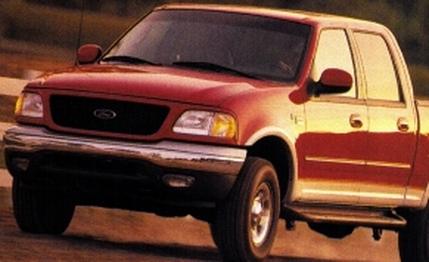 Road Test
Road Test
It seems almost incredible that there have been unsuspected gaps in the world of pickup trucks. Particularly full-size pickup trucks. Think about it. No other vehicle type offers a broader (or more bewildering) range of choices: two-wheel drive, four-wheel drive, short bed, long bed, standard cab, extended cab, V-6, V-8, a thicket of axle ratios, a plethora of payload ratings, and enough comfort-and-convenience goodies to qualify for Sybarites Anonymous. It's pretty clear that today's pickup trucks can be adapted to a wider range of purposes and tastes than ever before. And yet until last year, we somehow failed to perceive what was missing --a four-door pickup capable of accommodating a trio of full-size adults in its rear seat without altering their legs, in a package tidy enough to avoid the need for mooring permits during parking maneuvers.
Fortunately, astute marketing and product-planning types spotted this lamentable void in the product firmament. And as you'd expect, Ford, the nation's top purveyor of pickups, was among the first to come rushing to the rescue. In fact, the company unabashedly attaches that exact word --"first" --to the new F-150 SuperCrew, even though Nissan's Frontier crew cab and the Dodge Dakota Quad Cab rolled onto the scene a bit earlier. How can this be? Simple. The F-150 SuperCrew is the first full-size crew cab with a gross vehicle weight rating (GVWR) of less than 8500 pounds. See? The Dakota crowds F-150 turf, both in power and work ethic, but it's just small enough to qualify as a compact. Ford is doing something in the four-door compact-pickup department, too, although the marketing troops call the Explorer Sport Trac a sport-utility that happens to have a cargo bed grafted on. It's good that this distinction was explained, because it sure looks like a pickup truck to us.
Be that as it may, the key to the F-150 SuperCrew --ditto for the Frontier crew cab and Dakota Quad Cab --is simple: To accommodate the extra set of sedan-style doors, the cab was stretched. And to keep overall length in check, the cargo box --sheet steel inside, composite outside, an industry first --was shortened. After all, with the country west of the Mississippi pretty much settled, fewer folks will need something capable of hauling drywall and other construction stuff that comes in four-by-eight-foot chunks.
So the designers extended the F-150's cab by a foot, reduced the length of the cargo box to 67.2 inches (from the standard 78.8), and wound up with a truck that's exactly the same length as the popular F-150 SuperCab (which is how you say "extended cab" if you work for Ford).
The two trucks have the same 138.5-inch wheelbase and the same basic payload rating --1765 pounds. In contrast, Ford's traditional crew cab --the F-350 --adds another 15.5 inches to overall length, riding on a 156.2-inch wheelbase, and is almost exactly as maneuverable as a Zeppelin. And as a member of Ford's Super Duty line, it's a different truck on a different platform.
SuperCrew engine choices are limited to the two overhead-cam Triton V-8s offered elsewhere in Ford truckdom: a standard 4.6-liter edition (220 horsepower, 290 pound-feet of torque) and the upgrade 5.4-liter (260 hp, 350 lb-ft). Unlike the Dakota Quad Cab (this truck's nearest competitor at the moment), which offers a five-speed manual transmission, the SuperCrew is automatic only. Its four-wheel-drive system is the same switch-operated setup offered on other F-series trucks. Other options include a video entertainment center with a rear-seat VCR, and a pickup-bed extender.
The 4.6-liter V-8 does a decent job, but we prefer the extra punch of the 5.4-liter, which raises the payload rating to 1900 pounds and the trailer-towing capacity to 8000 pounds in two-wheel-drive editions.
Now, cynics may argue that Ford already has a four-door F-150 --the SuperCab --that doesn't sacrifice cargo-bed capacity. Why create another version that does?
Two reasons. First, the SuperCrew has real front-hinged, full-size doors, as distinct from the SuperCab's rear-hinged demi-doors, and the SuperCrew's doors are bigger, making it easier to get people and/or stuff in and/or out. Second, the SuperCrew's bigger cab provides more space once the people and/or stuff is inside.
Whatever you think about this new pickup phenomenon, Ford thinks it's compelling enough to command some pretty fancy prices. F-150 SuperCrew pricing starts at $26,755 for a base two-wheel-drive XLT model and travels up to a loaded four-wheel-drive Lariat at $31,790.
- Tony Swan